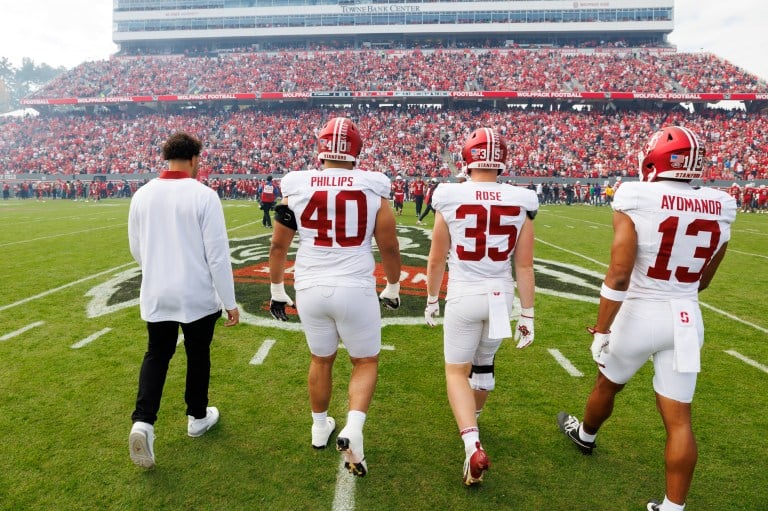As the leaves turn and autumn settles over Palo Alto, the Stanford football program finds itself at a critical juncture. Once a beacon of excellence in the Pac-12 and a respected name in college football, the Cardinal’s recent seasons have sparked conversations about its trajectory and future. The challenge ahead is not just about improving win-loss records — it’s about redefining the identity of a program that has historically prided itself on a blend of athletic and academic achievement.
Stanford’s challenges extend beyond the field. The University faces significant challenges in the evolving landscape of college football, particularly with the advent of Name, Image, and Likeness (NIL) deals and revenue-sharing models. Stanford’s commitment to academic integrity can sometimes conflict with the aggressive tactics employed by other football-centric schools nationwide.
As the University navigates these changes, it grapples with the complexities of distributing newfound revenue among various sports programs. The lack of a clear framework raises concerns about equity, as resources could be disproportionately allocated to revenue-generating sports like football and basketball, potentially sidelining less prominent albeit elite Olympic-level programs.
Furthermore, the changes in conference alignments this season have complicated the FBS landscape. As teams realign and new power dynamics emerge, the Cardinal must remain competitive in this evolving college football ecosystem. However, Stanford’s increasingly unappealing NIL deals and transfer portal further entrench the team’s untalented roster, which may prove ill-fated for Head Coach Troy Taylor in an era of heightened economic competitiveness.
Stanford football boasts a storied history marked by notable accomplishments, including Rose Bowl victories and multiple conference championships. The program has produced NFL talent and Heisman Trophy candidates like Andrew Luck. However, the past few years have felt more like a struggle against the tides of change than a continuation of that proud legacy. The departure of long-time head coach David Shaw at the end of the 2022 season left the team with a dearth of talent.
After disappointing though expected first-year struggles in 2023, the team has already showcased glimpses of promise, despite being interspersed with inconsistency. Early games against TCU, Clemson and Syracuse revealed a team that can score quickly but struggles with defensive cohesion. In a challenging ACC landscape where offenses run rampant, an inability to contain opponents often leads to swift losses.
Quarterback play remains a focal point; the Cardinal have cycled through several quarterbacks in recent seasons, desperately seeking a leader to stabilize the offense. Yet, with just four games left on the schedule, the quarterback situation continues to plague the offense. After coming off the bench late in the first quarter against Wake Forest, it was all set up for junior quarterback Ashton Daniels to reclaim his starting role in spectacular fashion on Saturday.
However, not much has gone right for the Cardinal over the past four seasons, and Saturday’s game against Wake Forest was no exception. Down three and at the edge of field goal range at the opposing 36, Daniels overthrew Elic Ayomanor (a painfully consistent sight) and was picked off at the 10 with 22 seconds left. Stanford’s 27-24 loss was its 12th straight home loss against FBS competition, a streak that dates back more than two years.
Additionally, Stanford is playing a lot of freshmen. While this speaks well for the future of the program that a lot of guys are getting experience, every week serves as a not-so-gentle reminder of Stanford’s young team. After missing some time due to injury earlier in the season, quarterback Elijah Brown continues to impress and share first-team reps with junior Ashton Daniels in the wake of Daniels’ surprising regression. Nevertheless, his inconsistency resulted in the end of his brief stint as the starting quarterback.
Tackles Kahlil House and Luke Baklenko replaced veteran tackles Connor McLaughlin, a fifth-year lineman widely thought to remain the starting right tackle, and senior left tackle Jack Leyrer. However, the offensive line has struggled immensely in several games this season, allowing the pocket to collapse almost every drive. It’s clear Taylor favors youth over experience, but the lack of game-time experience bleeds through every game.
It’s not like the freshmen aren’t doing good things out there — they are. It’s just that you need to be able to get more out of your veteran guys who know the schemes, and if you’re relying on a lot of freshmen to play, there will be immense growing pains that come with that strategy — especially on a team where most of the freshmen aren’t blue-chip 5-star recruits coming from powerhouse high school football programs.
Looking ahead, the future of Stanford football hinges on a few key factors: effective recruiting, player development and adapting to the changing game. Coach Taylor’s vision must translate into tangible results to rekindle enthusiasm among fans and alumni. Success in the next few seasons is critical — not just for improving the team’s standing but also for attracting the talent necessary to restore Stanford to its former glory.
If the team continues down this hole of consistent losing and dwindling fandom, the team may not be able to ever truly recover, as other schools continue to invest and improve their already nationally renowned programs. The financial gap between Stanford and other Power Five football programs has been widening significantly, driven by disparities in athletic revenue, sponsorships and media rights deals. As Stanford’s unique academic priorities and admissions policies limit its recruitment and funding potential, it increasingly finds itself at a competitive disadvantage in the high-stakes landscape of college football.
